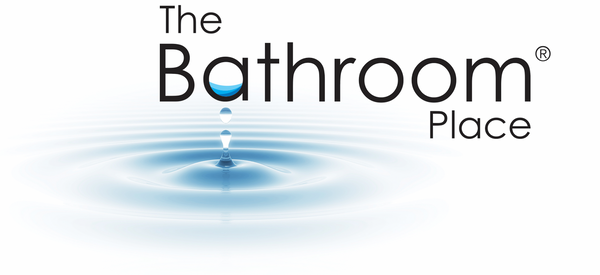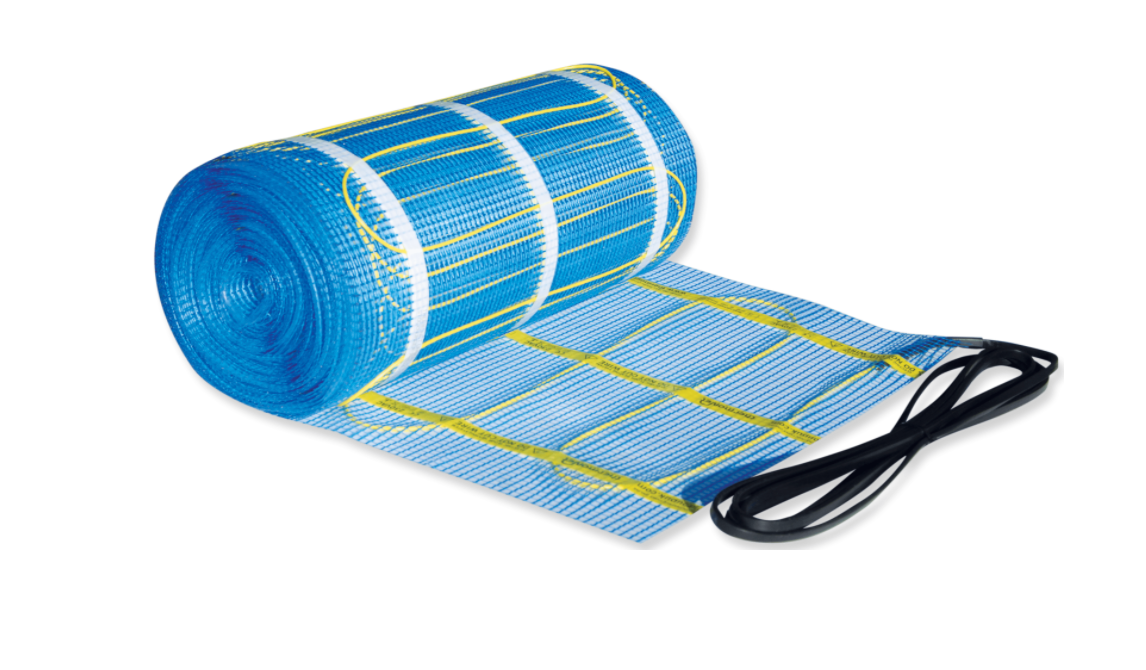What is meant by undertile & inscreed?
Let’s begin by understanding undertile heating, it’s pretty straightforward. This is where your Underfloor Heating is installed directly below the tiles. The Underfloor Heating is laid on top of the substrate, either concrete or timber, and ideally with insulation, and then the tile glue is spread over the heating and tiles laid on top. This means your floor heating is sitting in the 6-8mm of tile glue and doesn’t add to your height build-up.
To understand the inscreed system we need to understand what a screed is. The primary purpose of a screed is to give a smooth and level floor on which to lay your chosen floor finish however it is also used to adjust or slope the levels of a floor, especially in a bathroom.
A screed is typically a mix of sand and cement that is spread out over the floor so another way of understanding it is to consider it as a mini slab that is spread over the substrate before the floor finish is laid. The thickness of the screed will vary based on the application but would typically be a minimum of 20mm and up to 50mm thick.

Under Tile
What are the different systems?
There are different systems that are designed for either going below the screed or directly below the floor finish. Whilst the systems are essentially the same, it comes down to a difference in the wattage. If you are going below the screed then you want to ensure that you use a higher wattage system, so that it effectively heats through the screed as opposed to a system installed directly below the tiles. We will discuss this further when we get to the pros and cons.
Thermonet 200Watt mats are the ideal option for in screed applications providing easy installation and efficient storage heating in screed layers of 20-50mm.
In Screed heating will take longer to heat up, however the screed layer acts as a heat bank and holds the heat for longer, ensuring you don’t have added running costs. In Screed heating allows the tiler flexibility in creating falls in wet areas and can be installed under most floor coverings. It is recommended to insulate under floor heating to gain maximum performance from your system.

In Screed
What is the minimum and maximum thickness for In Screed Heating?
In Screed Heating is designed to be installed in screed layers between 20-100mm.
How does the heat-up time of In Screed heating compare with Undertile heating?
In a typical Undertile build-up the floor heating will take 2-4hours to reach temperature and for In Screed heating cable under a 25mm of screed it would also take approx. 2-4hours. However, for every additional 25mm of screed you will need to allow an additional hour for the heat to penetrate.
Is Underfloor Heating safe to be installed in the shower?
Providing that the shower floor is tiled (not a shower base) like the rest of the bathroom floor, all of Thermogroup’s underfloor heating systems are suitable for installation in the shower area.
The cable has an IP (Ingress Protection) rating of IP68 and a continuous earth braid the full length of the cable. This ensures it is safe should the cable come in contact with water and gives you the assurance of safety in the unlikely event of install damage. For further protection we recommend that you do not end the heating system in the shower area.
Can Underfloor Heating be installed up the side and on top of a shower seat?
All Underfloor Heating cable must be covered by a cement-based product and cannot operate in a void. Therefore, provided that the shower seat is tiled like the rest of the bathroom and all cable is covered by a cement-based flexible tile adhesive, then it is perfectly safe to install the heating on a shower seat.
What is the best Underfloor Heating system for my application?
If you are unsure which floor heating system best suits your needs or daunted by the many options and offerings on the market, Thermogroup's online underfloor heating system selector tool can help you make the best decision. Our underfloor heating selector takes you through a simple four step process to determine the most suitable underfloor heating system for your individual application then also lists out all the products required to get the job done, so you can be assured that you will have everything required when it comes to installation. If you have any requirements outside of those specified on the tool do not hesitate to contact us to discuss your requirements.
Can Thermonet 200W/m2 be installed directly below the tiles?
Yes, absolutely. Although the Thermonet 200W system is designed to be installed beneath a screed, it is also perfectly safe to be installed directly below the tiles, as with the 150W system. Due that the higher wattage, the 200W system will heat up more quickly than the 150W system when installed directly beneath the tiles. If you desire a more on-demand system or have a high heat loss application, then it is best to use the 200W system directly below the tiles.
What is the difference between Thermonet 150W and Thermonet 200W, and which system should I choose?
The difference between Thermonet 150W and Thermonet 200W is simply the wattage per square metre, and the application for which they are used. The Thermonet 150W is designed to be installed directly under tile, just in the tile adhesive, whilst the Thermonet 200W is designed for installation beneath a screed as the higher wattage makes it more effective in heating through this screed. For a further comparison between the two systems, please view our article on which is more effective, or to determine which system is right for your application try our Heating System Selector.
Should Underfloor Heating be installed below or above the waterproofing?
To ensure a fully waterproof substrate it is recommended to lay the floor heating over the waterproofing. In a screed application, where the waterproofing is on top of the screed, an in screed system can be laid before the waterproofing.
What are the rough in or first fix requirements for Underfloor Heating and a Controller?
When roughing in for our Underfloor Heating and the controller, the electrician will first need to bring mains power to the Thermostat location. The electrician will then also need to run two 20mm conduits from the Thermostat position down to the floor, for the Underfloor Heating Cold Tail and for the Floor Sensor. For further information and a visual representation, please view our Conduit Requirements download.
Over many years, we have continually been tasked with finding the right design solutions to match custom situations or fit with existing bathroom fixtures. We have succeeded every time. If you need more information to make a more informed decision on what you would like to purchase, do not hesitate to contact The Bathroom Place® and ask an expert.

